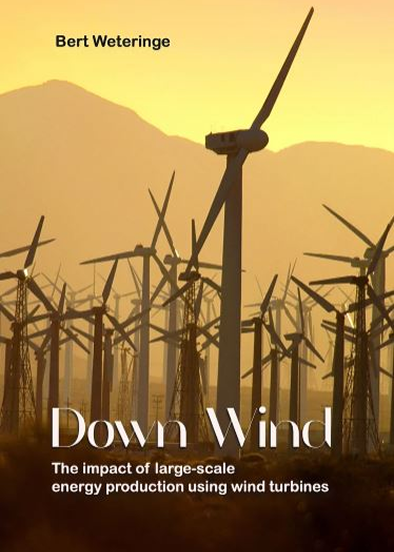Underestimating Clouds: A Climate Mistake We Cannot Afford
A new paper by physicists W. A. van Wijngaarden and William Happer, Radiation Transport in Clouds, suggests that clouds affect atmospheric temperature more than CO2, says Vijay Jayaray of the CO2 Coalition.
Carbon dioxide (CO₂) has been predominantly portrayed as the chief culprit driving global warming. For decades, this misconception has guided international policies, prompted ambitious targets for reducing CO2 emissions and driven a shift from reliable and affordable energy resources like coal, oil, and natural gas toward problematic wind and solar sources.
However, this theory overlooks important factors that influence Earth’s climate system, including a critical variable in the climate system – the role of clouds, which remains woefully underestimated.
Recent work by physicists W. A. van Wijngaarden and William Happer challenges this prevailing paradigm: Their new paper, Radiation Transport in Clouds, suggest clouds affect atmospheric temperature more than CO2 because they have a greater impact on the comparative amounts of solar energy entering Earth’s atmosphere and escaping to outer space.
The Overshadowed Influence of Clouds
Clouds simultaneously reflect incoming sunlight back to space (cooling the Earth) and trap outgoing heat (warming the Earth). This dual nature makes clouds both powerful and perplexing players in our climate system. The net effect of clouds on climate is a balance between these opposing influences, thus a central component of the Earth’s energy budget.
A recent study by van Wijngaarden and Happer, titled “Radiation Transport in Clouds,” delves into this complexity. The 2025 paper says the radiation effects of clouds can easily negate or amplify the impact of CO2. The researchers highlight that clouds have a more pronounced effect on Earth’s radiation budget than greenhouse gases like CO₂.
For instance, their research reveals that a modest decrease in low cloud cover could significantly increase solar heating of the Earth’s surface. In comparison, a doubling of atmospheric CO2 concentrations reduces radiation to space by a mere 1%: “Instantaneously doubling CO₂ concentrations, a 100% increase, only decreases radiation to space by about 1%. To increase solar heating of the Earth by a few percent, low cloud cover only needs to decrease by a few percent.”
This stark contrast highlights the disproportionate influence of cloud dynamics compared to CO2 fluctuations. Most state-of-art climate models are still in their infancy. We need more accurate measurements of clouds’ properties and their influence on the electromagnetic components of solar radiation if they are to be useful inputs for climate models.
Implications for Energy Policy and Reliability
Current strategies assume a direct and dominant link between CO2 emissions and global temperatures to justify aggressive “decarbonization” efforts and an increase in the use of solar and wind energy.
However, solar and wind are inherently intermittent, rendering them unreliable and very expensive as components of a power grid. The infrastructure required to support these technologies entails substantial upfront investments, higher operating costs and increasing utility bills for consumers.
Blackouts, energy shortages and price spikes are becoming increasingly common in regions that have prematurely decommissioned fossil fuel plants without adequate backup solutions. This trend disproportionately affects vulnerable populations, exacerbating energy poverty and hindering economic development.
The major justification for using solar and wind has been that they counter global warming by reducing CO2 emissions from burning fossil fuels. If small variations in cloud cover actually overwhelm the effects of CO2, then the climate’s sensitivity to greenhouse gases is being significantly overestimated. This has profound implications for policy.
Attributing global warming predominantly to CO₂ emissions from the use of fossil fuels is a gross oversimplification. While CO2 undoubtedly has a warming effect, it is relatively modest and beneficial, mainly moderating the difference between daytime and nighttime temperatures. On the other hand, clouds, with their multifaceted interactions and feedbacks, represent a critical and underappreciated component of this puzzle.
The findings of van Wijngaarden and Happer highlight a broader issue within climate science: the tendency to oversimplify complex systems for the sake of political expediency. As the global energy landscape continues to evolve, it is imperative that decisions be based on sound science rather than political dogma.
The time has come to reassess our approach to both climate science and energy policy. The stakes are too high to continue down a path of destructive policies based on erroneous analyses. We must prioritize reliable, affordable energy sources and grid stability over useless reductions in emissions of a harmless gas.
Click here to access the entire Radiation Transport in Clouds paper.
This commentary was first published at BizPac Review on February 10, 2025.
Photo: Shutterstock
By Vijay Jayaraj
more news
Climate Cult’s Inevitable Dissolution
The collapse of the Paris Agreement and the unmasking of the net zero illusion were never hard to predict for anyone with a shred of intellectual honesty. It didn’t take a fancy research title or an advanced degree. The writing was carved deep into the stone of energy reality, which no press release, no activist lobby and no billionaire-backed foundation could erase.
You can’t make laws against the sun
Astrophysicist Willie Soon has been researching the influence of the sun on the climate for decades. In an interview with Weltwoche, he explains why he does not view CO2 as a climatic control factor, how political and financial structures shape scientific findings and why he continues to research despite hostility.
2025 global tropical cyclone season debunks climate hysteria
Looking at the full global tropical cyclone picture for 2025, the season’s trends undercut the exaggerated claims of “worsening storms” and remind us that climate hysteria too often outpaces the facts.






